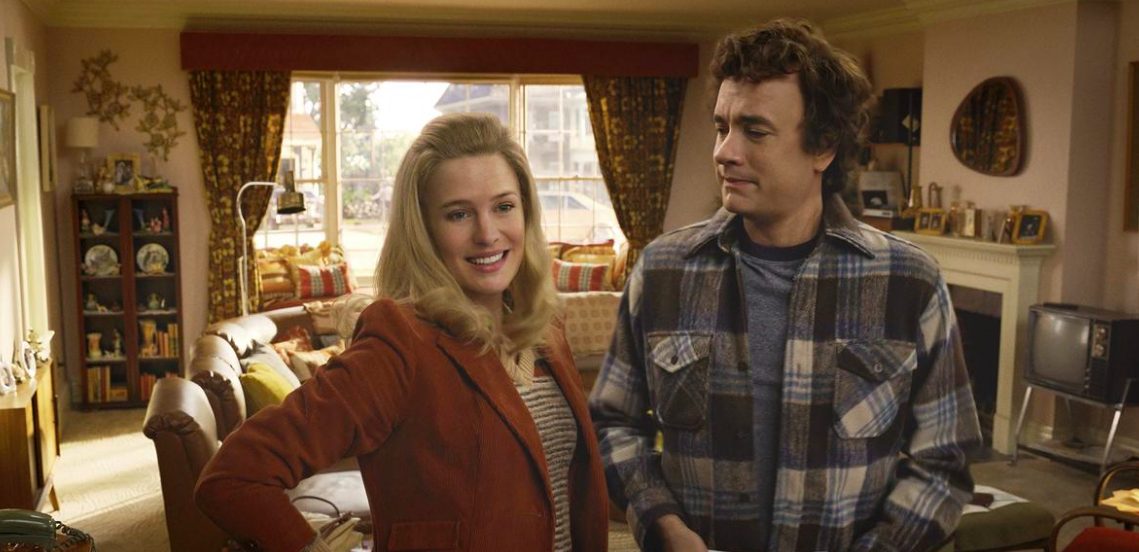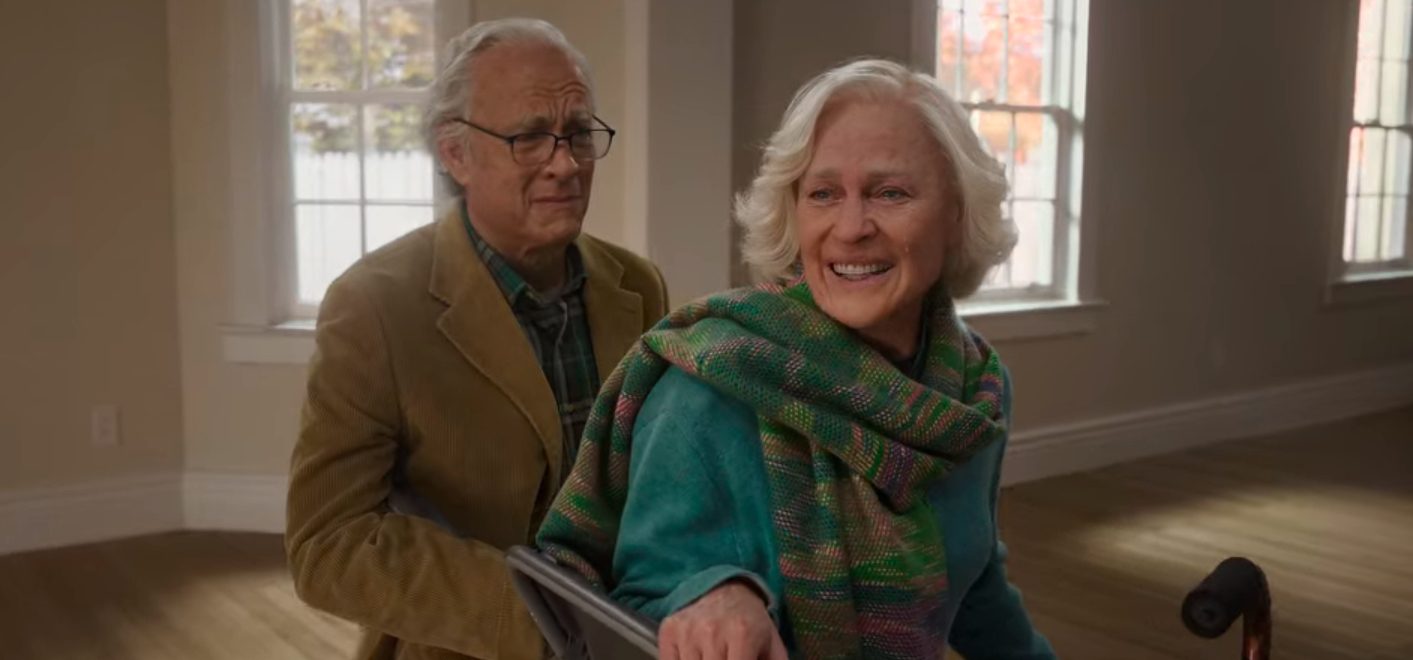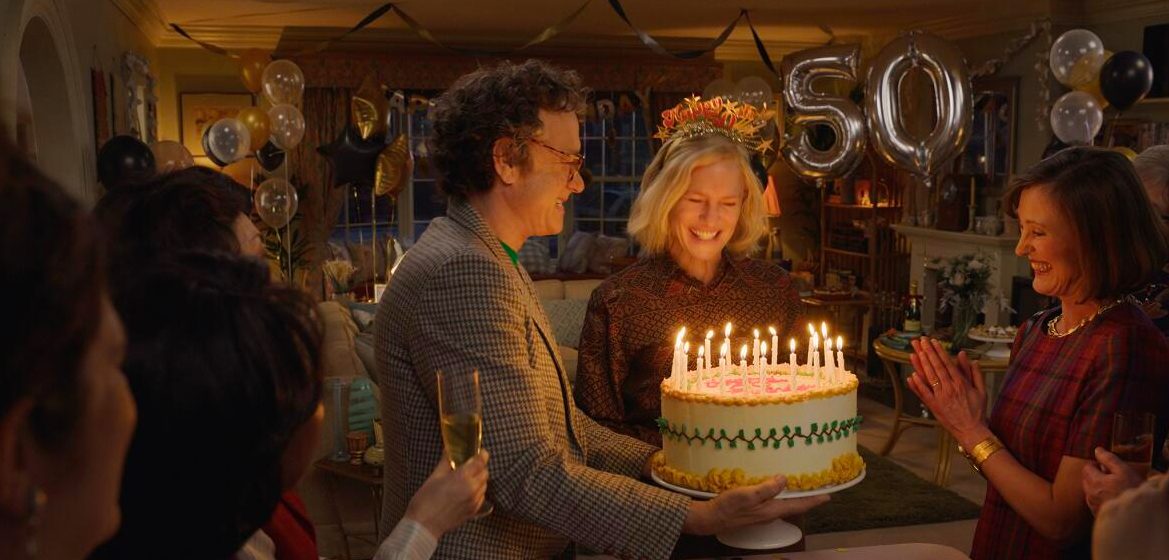Starring Tom Hanks and Robin Wright, ‘Here’ follows the story of a group of people who are connected to each other through one place that they call home at different periods in time. The Robert Zemeckis directorial jumps from one time period to another to give us a glimpse of all that has happened within a single frame. What sets it apart is the choice of the perspective with which the story unfolds. Throughout the entirety of the film, the camera remains rooted in one place and moves only at the end of the story. There is a solid reason behind this creative decision. SPOILERS AHEAD.
The Camera’s Lack of Movement Gives Meaning to the Title of the Movie
The title of the film ‘Here’ suggests that it is more concerned with the location than any other thing in the movie. It is the place that holds more importance rather than the things and people that come and go, and the camera’s placement in one spot throughout the film emphasizes this. The core of the story lies in the fact that one place has an unimaginable number of stories to tell, and this fits into the grand view of space and time. The place that we stand upon right now was not like this several years ago. It looked very different decades ago, centuries ago, millennia ago. To think about the world on such a time scale shows us how small our lives are, and yet, they are full of love, joy, sadness, and tragedies, all of which are witnessed by the places we inhabit. It is this mix of emotions that the director wanted to focus on.

In his interview with Vanity Fair, Robert Zemeckis explained the reason behind his decision not to move the camera for the entirety of the film. He called it “an interesting way to do a meditation on mortality,” which “taps into the universal theme that everything passes.” In another interview, the director talked about his own house in Tuscany, which he revealed is around six hundred years old. The thought of the history that the place holds often makes him ponder upon all that has happened on its premises and how, every time, the house has given a sense of belonging to every person who has lived under its roof.
Apart from the emotional and spiritual depth that the camera’s lack of movement brings to the story, the decision to have it so was also influenced by the story’s source material. ‘Here’ is based on the 2014 graphic novel of the same name by Richard McGuire. When Zemeckis read it, he saw the whole story play out in front of his eyes pretty clearly, which inspired him to make a movie about it. When the time came to shoot the film, he decided to stick with the novel’s narrative technique not only to stay close to the source material but also to keep in line with the message that the story is meant to give to its viewers.
The Significance of the Camera Movement in the End Relates to Margaret’s Story
Because the camera doesn’t move during the film, its sudden movement becomes incredibly meaningful in the end. Considering that the film jumps back and forth in time several times, the choice to end the movie on a scene that is not the end of the story is an interesting one. We know that following Margaret and Richard’s visit, the house will soon be sold to the Harris family, who will live there for several years until, eventually, they, too, are ready to leave the house and move on. We don’t see who will occupy the house next or what will happen to it, but we know that someone else will take over that space soon, and the story will keep moving forward.

The choice to end the film at the moment of Margaret’s acceptance of the place where she spent a good chunk of her life with her loved ones, even though she always argued in favor of leaving the place, adds another layer to the importance of appreciating places like this in one’s life. Soon after she and Richard have their first child, she tells him to find a new house so they can move out into a place they can call their home. She is desperate to leave his parents’ house, but there is always something holding them back, even after Richard agrees to buy a new house. Eventually, she does leave the place, but she also leaves behind her marriage, which had been straining under pressure over several years of their long relationship.
In the end, Richard brings her back one last time before the house is sold to help her find her memories back. She may not have liked to live there, but she did spend half of her life there, raising her children. The place holds all sorts of memories, and one such memory eventually crops up from the foggy regions of her mind, which is in the grips of dementia. The fact that the house helped her conjure her memories, when the words of her husband and the mention of her daughter couldn’t, shows the power a place can hold in a person’s life. So, it is when Margaret starts to remember it and confesses that she loves it that we get a fuller view of the house and the neighborhood. Thus, the movement of the camera marks the end of the film, bidding goodbye to the audience.
Read More: What Does the Hummingbird Mean in Here?


You must be logged in to post a comment.